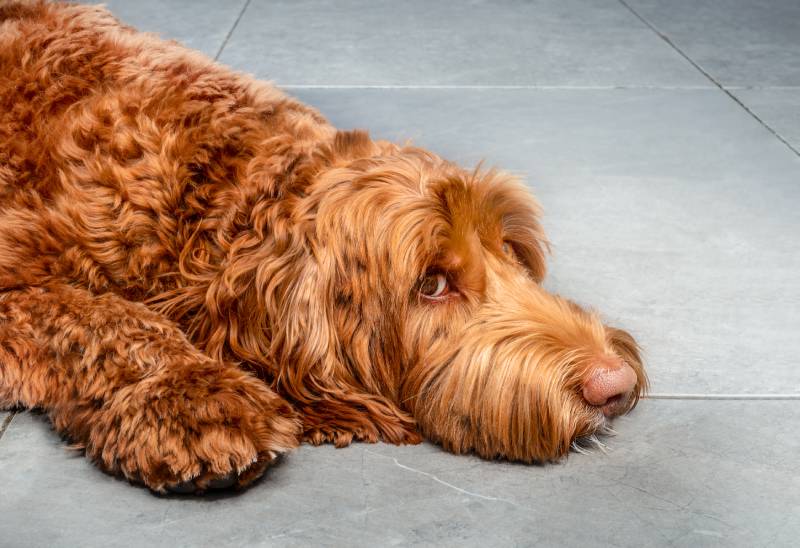Dogs, just like humans, can tear ligaments in their knees. While humans have anterior cruciate ligaments (ACLs), dogs have cranial cruciate ligaments (CCLs). The ligament provides stability to dogs’ knee joints. While humans often injure their ACLs while playing sports such as soccer or basketball, dogs are more likely to have degenerative issues that become apparent over time, but traumatic injuries can also occur. Dogs with complete ACL/ CCL tears cannot walk and need time to recover.
Dogs can have partial or complete CCL tears and ruptures. Partial tears often become more serious over time and can sometimes result in full ligament ruptures. However, dogs can walk with ligament injuries, particularly partial tears, but it’s not a good idea to let them put weight on their injured joints. Traumatic ruptures often occur suddenly when dogs are engaged in activities requiring quick direction changes. These injuries can be painful, and dogs typically avoid putting weight on the impacted limb.
What Are Some Common Signs of CCL Tears in Dogs?
Because CCL problems are often related to degenerative wear and tear, there are sometimes few identifiable initial signs that something may be going on. It’s possible for dogs with partial tears to be able to walk without limping or other signs of lameness. They sometimes begin to sit differently, often preferring to leave their legs extended. Others start to have difficulty jumping and exhibit changes in their activity levels. Swelling around the injured knee is also relatively common.
When tears progress and become full ruptures, dogs often refuse to put weight on the limb. Major trauma isn’t required to induce ruptures in dogs with weakened ligaments. Those who suffer traumatic tears are often engaged in intense physical activity when ruptures happen. Most dogs with these injuries suddenly stop running or walking and are unwilling to put weight on the injured leg.
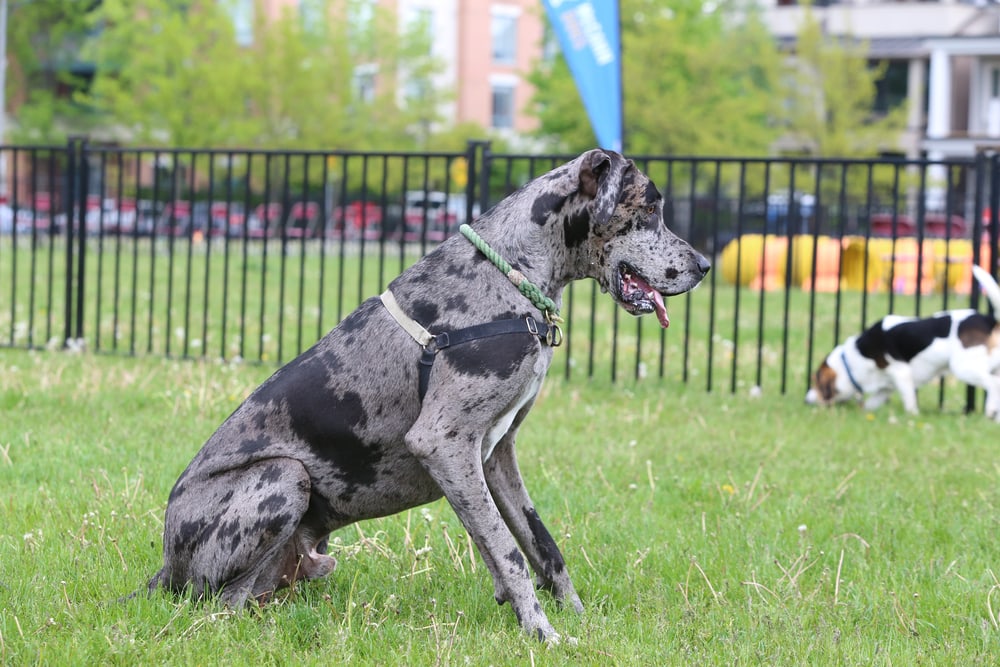
What Causes CCL Tears?
Overweight and out-of-shape dogs are at increased risk of developing joint conditions. Activities such as flyball and running over uneven terrain also tend to result in CCL injuries, particularly in pets who play hard on the weekends but aren’t regularly active. Canine athletes that spend time working on balance and building core strength often have less trouble with CCL ruptures.
Are Some Breeds More at Risk for CCL Injuries?
Yes. While just about any dog can end up with CCL problems, some breeds develop the condition more frequently than others. Newfoundlands, Massifs, Labrador Retrievers, Stafford Terriers, and Rottweilers all have a tendency to have joint issues. But the problem is particularly common among Rottweilers, Newfoundlands, and Stafford Terriers. Some evidence suggests that CCL problems in Newfoundlands may have a genetic link. Cocker Spaniels, Chihuahuas, Shih Tzus, and Pugs aren’t likely to develop the condition in comparison with larger dogs.
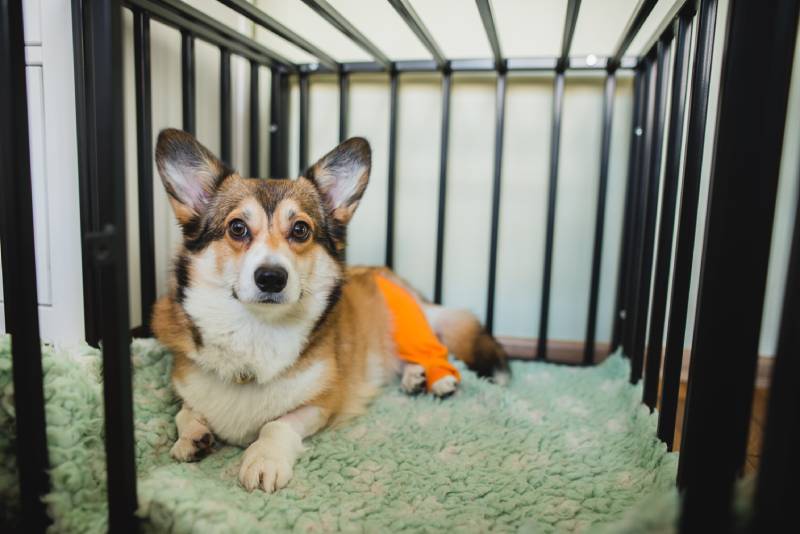
How Is the Condition Diagnosed?
Veterinarians use a multifaceted approach to diagnose CCL issues, often relying on physical examinations and X-rays. However, sometimes MRIs are required to identify partial tears accurately. The dog’s prior activities can also help get to the heart of the problem. Traumatic injuries often involve a pattern; a dog is usually running, jumping, or playing and suddenly can’t put weight on their leg.
What Does Treatment Entail?
Once a dog suffers a ligament tear or rupture, they’re likely to develop problems like bone spurs and arthritis due to joint instability. Conservative treatment is sometimes an option for small dogs with partial tears. With rest and medication to help control inflammation, many can get around reasonably well within 6 to 8 weeks. But the joint will continue to degenerate without surgery.
Dogs that weigh more than 30 pounds have more trouble with joint degeneration, which often leads veterinarians to recommend surgery for heavier patients. Several procedures are commonly used to deal with canine joint instability, including tibial plateau leveling osteotomy (TPLO) and tibial tuberosity advancement (TTA).
Extracapsular suture stabilization is an alternative that is less involved than the other two procedures and is often better for smaller dogs that need surgery. Recovery from all types of CCL surgeries is usually quite intense. Dogs often take several months to get back on their feet and usually have activity limitations for several weeks after the procedure. Physical therapy helps speed the recovery process along.
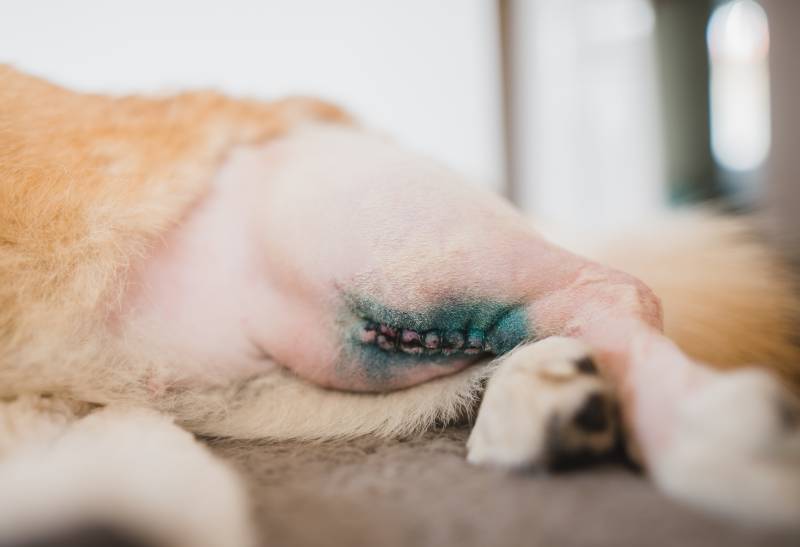
What About Later? Will the Problem Return?
Unfortunately, dogs with CCL tears and ruptures often develop arthritis even if they have surgery. Since arthritis is a progressive condition, it generally requires lifetime management in dogs with CCL injuries. It’s also relatively common for dogs with CCL ruptures in one knee to develop problems in the other. Dogs that don’t have knee ligament injuries surgically repaired usually develop arthritis and have decreased mobility as time passes.
Are There Other Common Canine Joint Injuries?
A dog with a ruptured CCL can also have a torn meniscus, which is a shock-reducing piece of cartilage located between the leg bones. Meniscus tears are usually repaired during CCL surgery. Conditions such as hip dysplasia and patellar luxation are sometimes seen in dogs with CCL ruptures.
However, some conditions can display similar signs, including sprains, hip and elbow dysplasia, cancer, fractures, inflammatory diseases, and osteochondrosis.
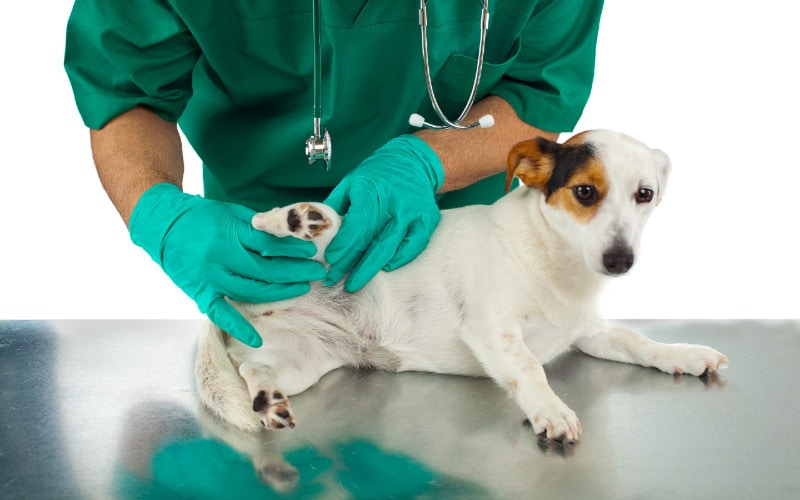
Does Insurance Cover CCL Surgeries?
Many insurance companies provide coverage for CCL surgery with a few important caveats. Most have pre-existing condition exclusions; they won’t cover conditions that occur before the policy is purchased. Companies can and do review medical records and sometimes refuse to pay medical bills due to pre-coverage veterinary visits for small problems that later appear to be connected to CCL issues.
Some insurers also have bilateral condition exclusions that apply. They won’t cover treatment for a dog’s left CCL if their right one has been excluded from coverage as a pre-existing condition. However, some providers have physical therapy add-ons that can help cover at least some of the cost of post-surgical rehabilitation. Alternative therapy, such as acupuncture, usually isn’t covered in accident and illness plans, but some insurance companies offer wellness packages that provide reimbursement for alternative therapies.
Summing Up
Whether a dog can walk with an injured CCL or not depends on several factors, including how the rupture or tear happens and the extent of the damage. Partial injuries associated with wear and tear are relatively common and often don’t result in sudden lameness, particularly in the beginning stages.
However, they usually progress and eventually, make it harder for dogs to walk and put weight on their limb. Traumatic injuries involving CCL tears often occur when dogs are in the middle of activities like running and jumping. They’re usually sudden and sometimes result in immediate lameness and refusal to put weight on the injured joint.
Featured Image Credit: sophiecat, Shutterstock
Contents
- What Are Some Common Signs of CCL Tears in Dogs?
- What Causes CCL Tears?
- Are Some Breeds More at Risk for CCL Injuries?
- How Is the Condition Diagnosed?
- What Does Treatment Entail?
- What About Later? Will the Problem Return?
- Are There Other Common Canine Joint Injuries?
- Does Insurance Cover CCL Surgeries?
- Summing Up

